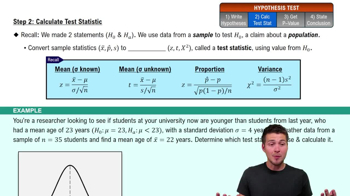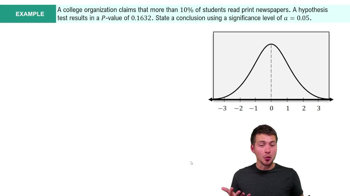Here are the essential concepts you must grasp in order to answer the question correctly.
Wilcoxon Signed-Ranks Test
The Wilcoxon Signed-Ranks Test is a nonparametric statistical test used to compare two related samples or matched observations. It assesses whether their population mean ranks differ, making it suitable for situations where the data does not meet the assumptions of normality required for parametric tests. This test is particularly useful for small sample sizes or ordinal data.
Recommended video:
Step 2: Calculate Test Statistic
Significance Level
The significance level, often denoted as alpha (α), is the threshold for determining whether a statistical result is significant. In this context, a significance level of 0.05 indicates that there is a 5% risk of concluding that a difference exists when there is none (Type I error). It helps researchers decide whether to reject the null hypothesis based on the p-value obtained from the test.
Recommended video:
Step 4: State Conclusion Example 4
Nonparametric Tests
Nonparametric tests are statistical tests that do not assume a specific distribution for the data, making them ideal for analyzing ordinal data or data that violate the assumptions of parametric tests. These tests, like the Wilcoxon Signed-Ranks Test, are robust to outliers and can be used when sample sizes are small or when the data is not normally distributed, providing flexibility in statistical analysis.
Recommended video:
Step 2: Calculate Test Statistic





